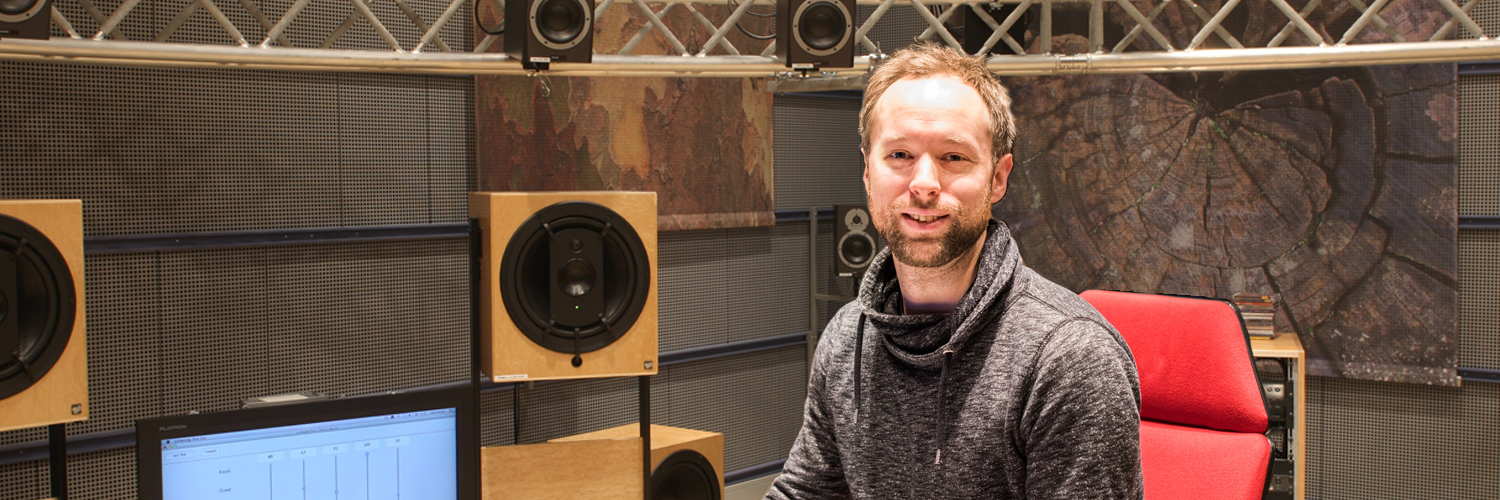Last year, Fraunhofer took the first step toward expanding the scope of its successful tool, the MPEG‑H Authoring Plug-in, by adding the MPEG-H Authoring Suite. Now this software package includes two more components that will help numerous audio professionals create more content in MPEG-H. Fraunhofer audio expert Philipp Eibl explains why the MPEG-H Conversion Tool (MCO) and the MPEG-H Production Format Player (MPF Player) are so important.
Philipp, what have users been able to do with the MPEG-H Authoring Suite (MAS) up to now?
With the release of MAS 3.5, we had already added another tool to the MPEG-H Authoring Plug-in (MHAPi), namely, the MPEG-H Authoring Tool (MHAT). This made MPEG-H authoring outside of a digital audio workstation (DAW) possible for the first time, as well as letting users import MPF (MPEG-H Production Format) and BWF/ADM (Broadcast Wave Format/Audio Definition Model) files. These can be both played back and edited in MHAT.
With MAS 3.6, we’re adding further key functions to the toolbox to make production for MPEG-H as easy and convenient as possible.
What exactly should we be picturing here?
With MHAT in version 3.5, we were able to make a tool for the playback of MPF and BWF/ADM exports readily available for the first time. However, it can play only audio. Now with the MPF-Player, we have a solution that makes it possible to conduct quality control of video plus MPF (in a MOV or mp4 container, for example) just by using drag and drop.
The MPEG-H Conversion Tool facilitates the exchange of productions, regardless of which tool was used to create the original export. This makes it an important hub that can merge different Next Generation Audio (NGA) formats.
What exactly does the MPEG-H Conversion Tool do?
The MPEG-H Conversion Tool converts various profiles of BWF/ADM, the open NGA standard, into either the comprehensive MPEG-H BWF/ADM format or our MPEG-H Production format. Both target formats are PCM audio with a versatile set of metadata, including the positions of audio objects, the properties of MPEG-H presets, and volume information.
The big advantage for users is that it’s now very easy to transfer BWF/ADM files created with, say, the Dolby Atmos Production Suite to MPEG-H BWF/ADM and to continue using them in an MPEG‑H‑based environment.
This gives sound engineers the greatest possible freedom in their choice of production tools, without having to worry about potential incompatibilities in the distribution channel.
As a result, it doesn’t matter whether the end of the chain is a music streaming service or a TV station.
What can users do with the MPF-Player?
The MPF-Player enables quality control of AV content with audio in MPF format – simply by using drag and drop. Users can conveniently test MPEG-H authoring and possible interactivity options or check the synchronicity of image and sound.
Regarding video, the player supports many common formats, such as ProRes 422 variants or H.264, each with audio in MPEG-H Production format on the audio track.
This makes it quick and easy to ensure the quality of the production before the material is encoded or passed on to a customer.
Philipp, what is your background and what do you do at Fraunhofer IIS?
I studied multimedia art and media technology/production, both with a focus on audio. Before coming to Fraunhofer IIS three years ago, I worked in Munich for several years at Bavarian public‑service broadcaster Bayerischer Rundfunk.
Here at the institute, I’m part of the SoundLab team. In many respects, we serve as a bridge between our scientists and developers and the “outside world” of broadcasters and producers. We also create content ourselves and take care of the infrastructure of our sound labs, to name just a few of our responsibilities.
In recent years, the development of MPEG-H post-production tools has emerged as one of the main focuses of my work.

